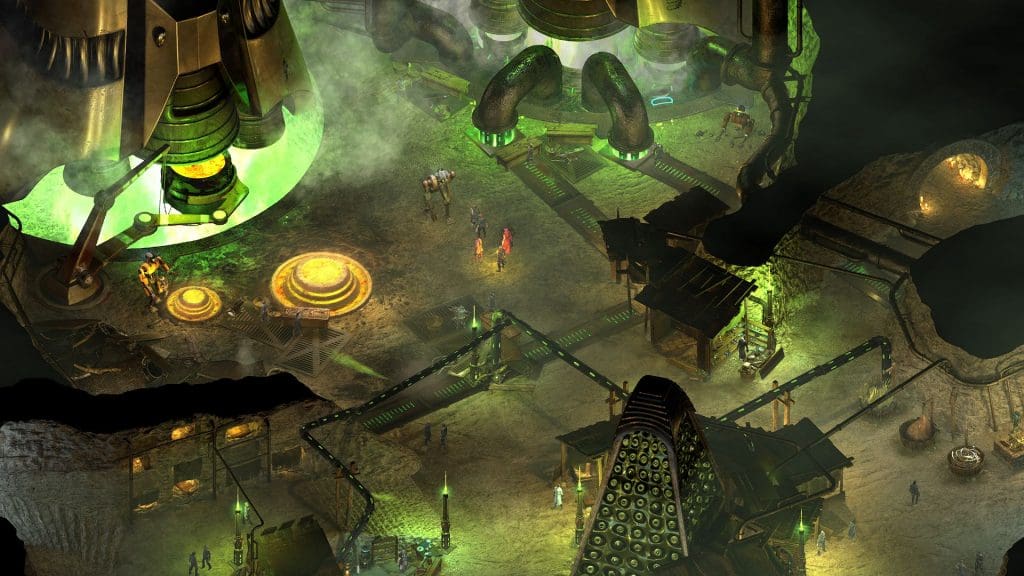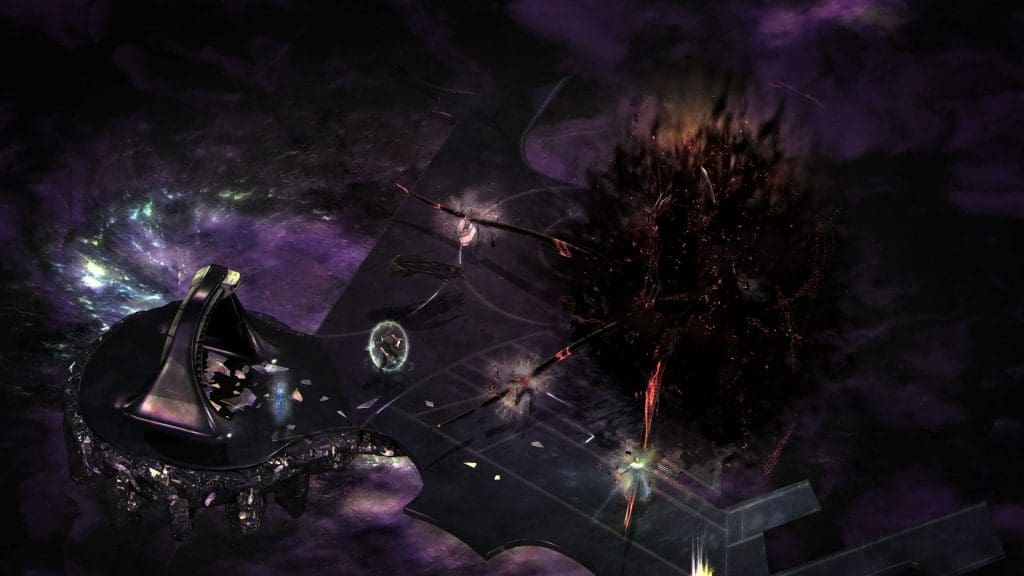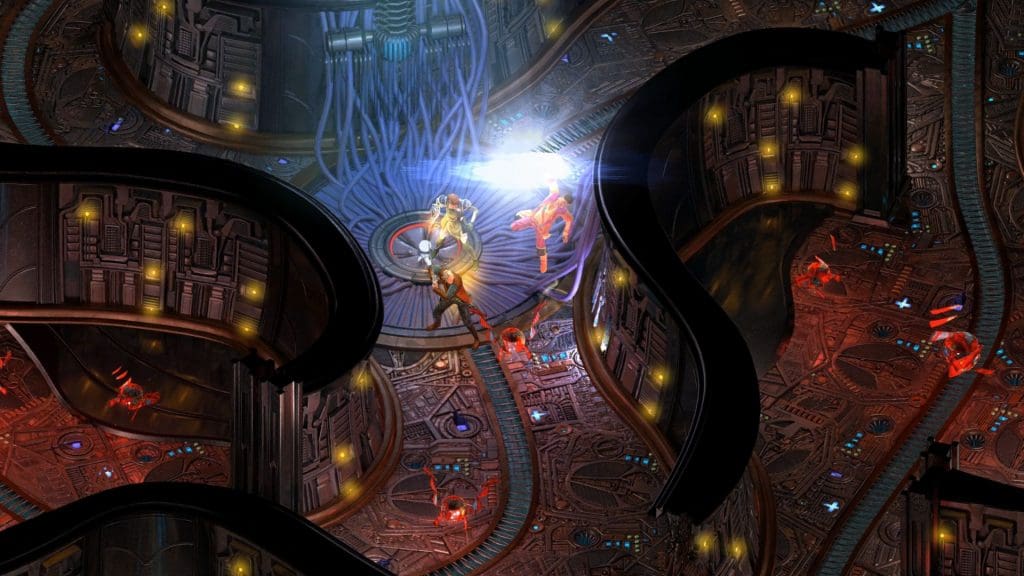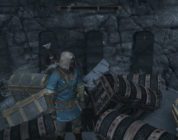On Feb. 28, 2017, Techland releases the inXile Entertainment developed Torment: Tides of Numenera on consoles and PC, and we decided to check out the Kickstarter funded RPG.
Inspired by Monte Cook’s science fantasy tabletop RPG, Numenera, Torment: Tides of Numenera is set in a world that combines advanced technology, with a medieval setting. In this world, one being known as the Changing God, has found a way to escape death, and transfers his conciseness from one body to the next, as he alters each new body to be stronger, or more skilled, than the previous. His cheating of death leads to some trouble however, as a being known as The Sorrow, awakens and begins hunting both him, and the bodies he leaves behind, as each one of his former bodies takes on a life of its own, after he leaves it behind.
These beings, known as Castoffs, have advanced healing along with several other inhuman abilities, and many tend to make a mark on the world around them, some even choosing to battle their body’s former host. Over the many years that the Changing God has traveled and altered the course of the world, he has made multiple non-The Sorrow enemies, and as the Castoffs awaken, they tend to be caught up in some of chaos that their creator has caused.
After creating their character, choosing between the Glaive (Warrior), Nano (Wizard), and Jack (Rouge), players take on the role of The Last Castoff, the most recent of the Changing God’s bodies, who awakens mid-fall, crashing through a dome and causing damage to the machine required to help keep them safe from The Sorrow. As they work to restore the machine, they learn more about the world around them, recruiting allies to help, both mortal and Castoff, as each decision they make affects the world and its characters. These choices alter your character’s “Tides,” which are each represented by different colors, and reflect your character’s “Legacy,” the path they walk in their journey. Depending on the dominant Tides, the character may also gain special abilities and skills. As a goody two-shoes when I play (and probably in life), my choices are typically the charitable and helping kind, with only a few aggressive actions.
In my time playing, I choose to drag my feet and wander a bit, delaying a few quests that were hinted at, and not getting things settled right away. This delay proved to be a good example of how your choices affect the world, because I didn’t take care of something sooner, the progression of the quest led to the death of a minor character and damage to the city map. Choosing to act right away, or delaying, fighting and killing an enemy, or choosing to let them live and leaving them with a reminder of their encounter; each choice you make will affect the game world, how your allies see you, as well as how your enemies act.
The main story moves slow at first, and can drag, but once you start to make progress, it does pick up and gets more interesting, as you learn about some of the other Castoffs, as well as The Sorrow, and The Changing God. The game is really lore heavy, so when you talk to characters, you can learn a lot about the game, but it can be time consuming. It can be a easy to lose yourself as you work through the main story, there are a lot of side quests and characters wandering the towns. I spent the first 3-5 just running back and forth, meeting and recruiting, with not much action. It is good that the journal makes remembering what you should be doing, easy.
Once I did find my way into a few battles, I found an enjoyable combat system that was easy to pick up, while offering a fair challenge. When you enter an instance where combat is an option, a bar at the top displays the turn order. Once one of your party of four’s turn comes up, players move the mouse to a point where they want to move their character, and they can choose to attack (depending on equipped weapons ranged or melee), hide, or unleash special abilities, adding to each one’s effectiveness, by adding effort from the character’s Might, Speed, or Intelligence stat pools. Players won’t always resort to combat in instances though, sometimes using stealth to sneak past enemies is the best course of action, and the best way to survive when you are outnumbered.
The stat pools play a big role throughout the game, from the added effort in battle, to persuasion using Intelligence, or smashing objects with Might. The chance of success of certain actions can be increased using the available amount of points in each pool. As you use them, each pool will deplete, with items or sleep being the best way to raise the stat back up.
Leveling up will allow for the increase of the available points in each pool, as well as adding to the amount of effort you can use at a time, even giving yourself a slight edge when you try to use a certain pool. Additional skills can also be unlocked, which can be either active, used for combat, or passive and used in normal play. With the right skillset, a player can avoid many altercations. The type of character that a player chooses at the beginning will affect this even more, as their personality adds to the effectiveness of some choices. I choose a Charming Jack, which gave me a slight edge with persuasion.
For those times that battle can’t be avoided, players can equip an ornament, a cape, weapons (ranged or single and two-handed melee), and armor, which will offer a certain amount of protection, though it may take away from your stat pools if you choose to use heavier armor. Bonded items can also be equipped, which add certain bonuses to your character, like increased perception, though they may also come with negative effects. There are also “Cyphers,” which are items that when used, can offer a variety of different uses, including a bomb of sorts, that deals damage to anyone in its radius, or an item that removes the fog from the map. These Cyphers can be used multiple times, but if you have too many of them on you, they may have a negative effect on your character as well.
Visually, the game probably isn’t the most stunning, but it does look clean, and the combat and character movements look good. Many of the interactions and scenes are still images with lots of text, or voice, so it likely won’t wow you in the same way a Final Fantasy might, but the game does look solid, and has the feel of classic RPGs, while also offering something like the table-top experience, from which it was inspired.
The game’s music is also good, and has that same feel of older RPGs, like the Risen or Gothic series, with their sometimes-soothing melody, or the increased pace of battle music, adding to the atmosphere, along with the sounds of clashing swords, or general environmental noises. There are some voices as well, though from what I noticed, they typically didn’t read out all the conversation that you are having with them. It would be impressive if they did, given how much text there is.
Now, for a confession, I didn’t finish Torment: Tides of Numenera before this review. The pacing of the story, and the amount of time needed to really go through everything is more than I had. With that said, I have all intention of finishing it, as it managed to hold my attention, and the characters were interesting enough that I wanted to learn more. Even after what really was a slow start, that almost had me wanting to stop before I even got started.
Torment: Tides of Numenera is a game for those gamers that like to have options. If you don’t want to rush in and battle, and you would prefer to be diplomatic, those choices are there. Or, you can just go all out and try and destroy any foe that stands in your way. That each choice you make has a deeper consequence in the game’s story was also a nice touch, and it makes it hard to ignore certain situations.
The Changing God, and its many Castoffs also make the game intriguing, as you can recruit among your brothers and sisters, or even turn some in to enemies. With options like cutting them to pieces, or permanently scarring them, there are some dark choices to be made when handling the immortality of your fellow Castoffs, and your own. There was even an option to let yourself be eaten, to gain addition knowledge.
The controls are fairly simple, and while I would have liked a controller option, I didn’t find one as I played on the PC, the console versions will likely give players a different experience. While it was possible to assign hotkeys, and use the keyboard, most of the game can be played easily enough, by just using the mouse.
I found Torment: Tides of Numenera to be an enjoyable game, it has a deep focus on story, and while there is a lot of text to go through, the characters and main journey are well worth experiencing. Sadly, the game isn’t for everyone, it can slow and drag at times, and a limit of four characters in your party can feel unfair, especially when you go up against enemies that can outnumber you 4 to 1. It is a great addition to an RPG fans collection though, if they don’t mind a time eater of a game, challenging battles, and the feel of a classic RPG.
(This review is based on playtime spent on the Steam PC version of Torment: Tides of Numenera. I backed the project during its initial Kickstarter campaign.)







